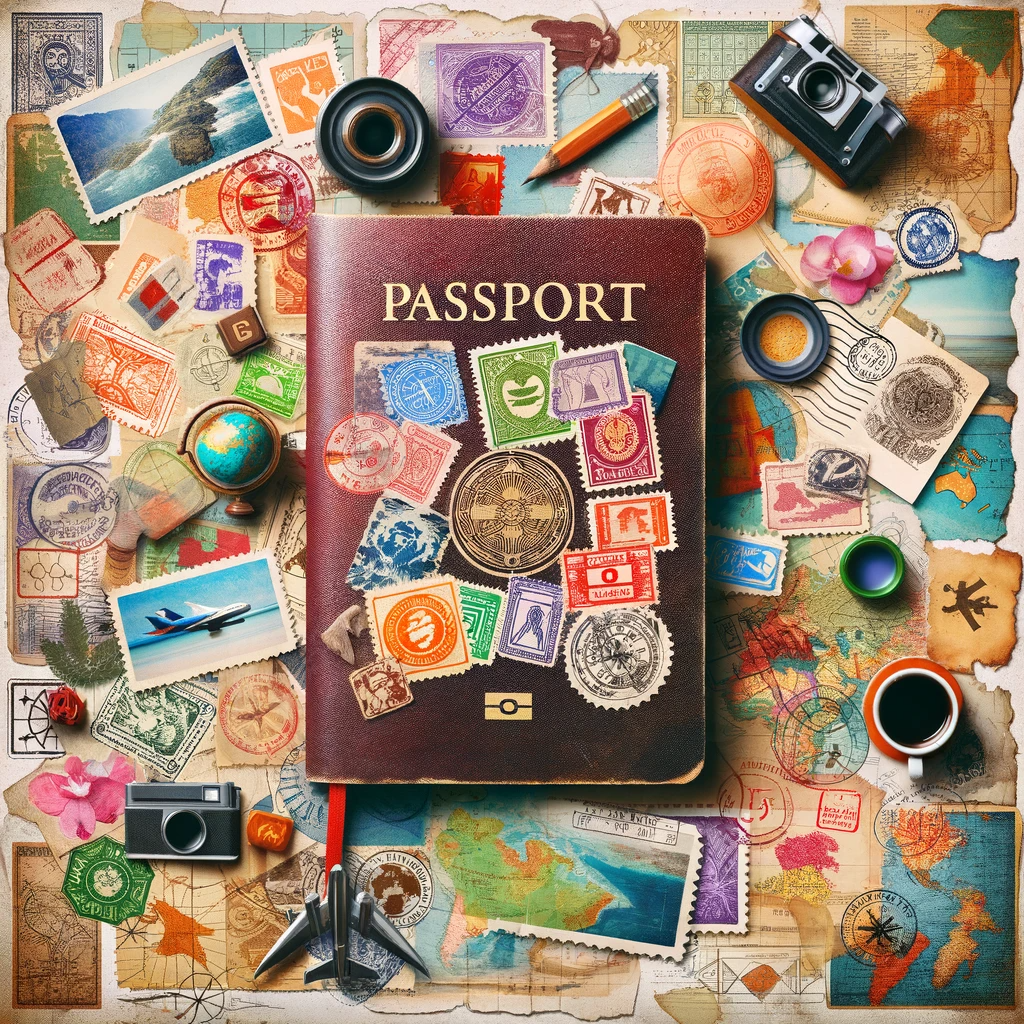For travelers seeking luxury trips without the high price tags, travel hacking unlocks incredible savings. This in-depth guide covers the top 7 fundamental rules for maximizing rewards and seeing the world through travel hacking.
Table of Contents
ToggleIntroduction
Travel hacking leverages credit card rewards programs, airline miles, hotel points, and other loyalty systems to earn free or deeply discounted travel. It’s like extreme couponing, but instead of groceries, you’re “couponing” vacations and getaways.
With strategic applications, meeting spending requirements, and transferable currencies across programs, it’s possible to book high-end flights and hotels for little to no money out of pocket. Travel hacking allows regular people to enjoy 5-star experiences on a 1-star budget.
But there are rules to follow if you want to maximize value and points. This comprehensive guide outlines the 7 key rules every successful travel hacker needs to know. Let’s dive in!
Rule #1: Know Your Credit Score
The cardinal rule when starting any travel hacking journey is knowing and reviewing your credit score. Almost all travel rewards credit cards require excellent credit for approval. Before applying, check your score through Experian, Equifax, TransUnion, or the Credit Karma app.
The minimum credit score needed to get a travel reward credit card varies depending on the card issuer and the specific card. However, most travel rewards credit cards require a good to excellent credit score, which is typically considered to be 670 or higher according to FICO. Some cards may require a higher credit score, such as 700 or above. It’s important to note that credit score requirements can vary depending on other factors, such as income and credit history. If you have a fair credit score, which is typically considered to be between 580 and 669 according to Experian, there are still some rewards cards you may be able to get approved for. However, you may need to be flexible in terms of the type of rewards you earn and be willing to start with a lower-tier rewards credit card to build your credit score. It’s always a good idea to check the specific credit score requirements for a travel rewards credit card before applying.
Increasing your credit score and increasing your odds of getting approved is possible. Here are 5 proven ways to increase your credit score:
- Pay all credit card and loan bills on time – payment history is the biggest factor in your score. Set up autopay with the credit card company and always pay the statement balance.
- Lower your credit utilization ratio – keep balances low compared to your limits. Aim for less than 30% or less.
- Increase your credit age and history – let your accounts age. Avoid closing old cards if possible. Another option is to downgrade your card to a no fee card and keep the card.
- Limit hard credit inquiries – too many credit checks when applying for loans/cards can lower your score. This is hard one if you are playing the credit card signup bonus game. That’s why having a strategy for this.
- Fix any errors on your credit report – dispute mistakes or outdated information to boost your score. There are companies that can assist you with this process. In fact, we have used this in the past and was able to clear up some errors on our credit reports.
Check your credit report from all three bureaus. When your score reaches the 720+ range, you’ll be primed for approval on the top travel credit cards and their epic bonuses.
Rule #2: Have a Goal in Mind

It’s important to have a clear travel hacking goal before signing up for multiple rewards cards. Do you want free flights to Europe? First class tickets to Asia? Family vacations to Hawaii? Do have plans to fly domestically? Your traveling goals or vacation plans will determine what credit cards meet those goals.
For example. If your goal is to travel domestically, including Mexico and the Caribbean, then the Southwest Rapid Rewards credit card and the Southwest Companion Pass may be your best options. Other options include credit cards that can transfer to airline partners, such as the Capital One Venture X credit card.
If your goal is to have an amazing vacation in Europe, then the Chase Sapphire Preferred or the American Express Gold card may be your best option. These cards have a wide option of airline transfer partners, such as Air Canada, Air France, Virgin Atlantic or British Airways that can get you over the pond with points and miles, it’s simple.
Rule #3: Use Credit Cards for Daily Spend
One of the key travel hacking strategies is to use rewards credit cards for as much regular spending as possible. Put everyday purchases like groceries, gas, dining out, bills, and more on your chosen travel reward cards. We use our credit cards to pay for our cellphone bill, car insurance and we even use a credit card to pay our property taxes (only in certain situations).
Treat your credit card as your ATM card or as cash. I never use my ATM card. This method also protects your bank account from fraud or from being hacked.
This allows you to earn points, miles, and bonuses through your everyday spending. Depending on the cards, you can earn:
- 3-5x points on travel spending
- 3-4x points at grocery stores
- 3-5x points at restaurants
- 2-3x points on gas and streaming services
- 1-2x points on all other purchases
Maximize your earnings by picking cards with bonus categories that match your spending habits. For instance, the Chase Sapphire Reserve earns 3x on travel and dining. The Amex Gold Card earns 4x at restaurants and groceries. Align your cards to your spending for exponential rewards.
Rule #4: Meet Minimum Spend Requirements
The big introductory bonuses on travel rewards cards typically require you to spend a specific minimum amount within a set time frame to earn the full bonus.
For example, the Chase Sapphire Reserve requires you to spend $4,000 in the first 3 months to earn the 60,000 point sign-up bonus. The Capital One Venture X card requires $4,000 spent in 3 months to get the 75,000 mile bonus.
There are a few techniques to ensure you hit these minimum spend requirements:
- Pay your utilities, or other bills on the new card
- Prepay 6 months of insurance premiums
- Pay your property taxes,
- Use the card for regular monthly spending on groceries, restaurants, gas, etc.
Another option to meet your minimum spending requirements is called manufactured spending. One manufactured spending option includes buying gift cards and then using the gift cards as your daily spending. This method can help but comes with risks if done improperly. The safest way to meet the minimum spending requirement is through natural spending.
Rule #5: Pay Your Credit Card Statement Each Month
One of the cardinal rules of travel hacking is to pay your credit card statement in full each month, and the reasons are as multifaceted as they are vital.
Firstly, this practice ensures you avoid the hefty interest charges that can quickly erode the value of any points or miles earned. Credit card interest rates are notoriously high, meaning carrying a balance can negate the rewards you’re collecting to travel affordably.
Secondly, paying off your balance punctually safeguards your credit score—a crucial factor in qualifying for the best travel rewards cards. High-interest debt can lower your score, making it harder to get approved for premium cards with lucrative sign-up bonuses and benefits.
Thirdly, this discipline instills financial responsibility, ensuring that you’re earning rewards on money you would be spending regardless, rather than spending more to chase points. By paying your statement in full, you’re leveraging the credit card to your advantage without falling into the pitfalls of debt, making travel hacking a sustainable and smart approach to experiencing the world. Any interest you pay, which can be as high as 20%, will cancel any benefits you receive.
Rule #6: Understand Chase’s 5/24 Rule
One crucial rule for maximizing Chase credit card approvals is understanding Chase’s 5/24 rule. This rule automatically rejects applications if you’ve opened 5 or more credit cards from any issuer in the past 24 months.
For example, if you opened 2 Chase cards, an Amex, and 2 Citi cards in the past 2 years, you’re at 5/24 – and Chase will decline your application.
This rule impacts strategic timing of applying for Chase cards like the Sapphire Preferred, Ink Business cards, United cards, Southwest, Marriot, Hyatt, etc. To access the most Chase cards, apply before you reach 5/24, then focus on other cards, such as American Express or Capital One.
Rule #7: Stay Informed
Another top rule for travel hacking is to always stay informed about promotions and partnerships between airlines, hotels, and credit card programs. The landscape of travel rewards is dynamic, with frequent changes to policies, partnerships, and special offers that can be leveraged for maximum benefit.
Subscribing to an email list from your preferred airline can keep you up to date of the most lucrative deals and promotions. For example, Air France has monthly promotions that reduce their award fares 25-50%. We’ve taken advantage of these on several occasions on flights to Portugal.
Credit card companies also have special offers that provide bonuses up to 30% if you transfer your points or miles to one of their travel partners. This can make a big difference, especially if you find special award fare price.
By staying informed and adaptable, you can capitalize on limited-time offers and strategic partnerships, stretching your points and miles further and maybe utilize your points to book that business seat rather than economy. This is a game changer for those long haul flights, particularly to Europe.
Conclusion
From understanding 5/24 to earning sign-up bonuses, applying these 7 rules positions you for travel hacking success. As you master your credit cards, accrue points strategically, and redeem awards skillfully, your travel costs plummet.

Implement these tips to visit your dream destinations in luxury for much less than you thought possible. Bon voyage hacking the travel world!


